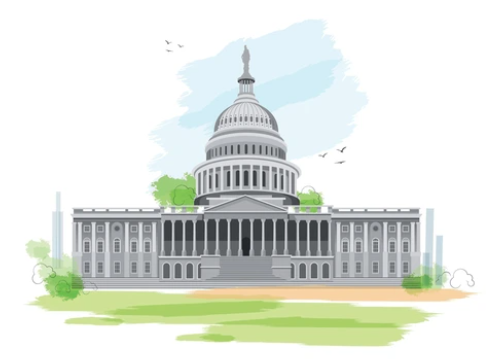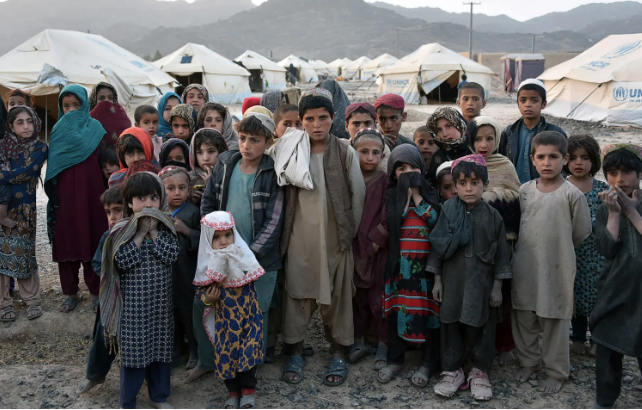The History of The Taliban and Its Effect On Afghan Refugee Populations
April 28, 2023
Amnesty International states, “Afghan refugees represent one of the world’s largest protracted refugee populations. Over the past four decades, many have been forced from their homes to never see them again. Some were able to return, for a while, but had their lives upended by a fresh eruption of conflict and violence – either to be displaced elsewhere in the country, or to become refugees yet again.”
The global refugee crisis is one that is rapidly on the rise in various countries, most notably Syria, Venezuela, Afghanistan, Ukraine, and South Sudan. The UNHCR estimates a total of 100 million refugees globally by the end of 2021, including individuals who had been internally displaced and those who had fled from violence, persecution, or human rights violation in their native countries. Afghanistan in particular, is a country that has had dreadfully high rates of displacement and refugee populations. And with the resurgence of the Taliban in 2021, it has become increasingly worse.
What is the Taliban?
As a predominantly Sunni Pashtun group, the Taliban was founded around 1994 with the intent of taking over Afghanistan’s society and state. According to Britannica, the Taliban emerged after the Afghan war concluded in 1992, intending to overthrow Afghanistan’s new and weak government which failed to instill civil order. By 1996, the Taliban had seized Kabul, the capital of Afghanistan, and began to instill their strict and oppressive laws into society.
The Taliban demonstrated their negligence for basic human rights, especially those regarding women. Several of its policies involve strict regulation on women’s clothing, that being that Afghan women must fully cover themselves head to toe in a burqa, as well as severe restrictions on women’s education; the Taliban banned all girls from attending middle school, high school, and university. Essentially, the Taliban intends to eradicate women from public life, banning most fields of employment for women and enforcing some of the most oppressive policies Afghanistan has experienced.
Furthermore, the Taliban also harbored the leader of al-Qaeda, Osama Bin Laden, who was responsible for the terrorist attacks on the Pentagon in Washington D.C., and the World Trade Center in New York in 2001. However, following these attacks, the Taliban still rejected the requests to extradite Osama bin Laden and other members of al-Qaeda. In response to this refusal and the al-Qaeda attacks, the United States launched Operation Enduring Freedom, receiving support from some of its allies, with the objective of destroying the al-Qaeda terrorist network and the government of the Taliban. These efforts were in support of the Northern Alliance, an Afghani political coalition that is anti-Taliban. The United States began a bombing campaign against Taliban forces and invaded Afghanistan, conducting air strikes and bombarding parts of the country. In a few months’ time, the Taliban regime crumbled. American troops and officials remained in Afghanistan, projecting power and suppressing the Taliban in support of Afghanistan’s current government. The Taliban’s power never truly faded, however.
The Resurgence of the Taliban
Ms. Redican, an AP World teacher at HHS, comments on U.S. involvement in suppressing Taliban forces, claiming, “I think we should try and help out in any way that we can. Since the Cold War, the situation in the Middle East has been turbulent, and our relations with those countries have been relatively the same.”
Initially, when the United States placed troops in Afghanistan after the 9/11 attacks, this proved true. However, throughout the past two decades, the United States was able to subdue Taliban authority in Afghanistan, and American troops were officially withdrawn from the country in August 2021. This left a power vacuum that the Taliban exploited and filled. The Taliban pounced on the opportunity for power, rapidly capturing districts throughout Afghanistan. It seized Kabul and the majority of the country within several months, overthrowing the weak central government. Reinstating many of their previous policies, the Taliban ruled with brutal authority and complete disregard for human rights.
The Refugee Effect
Displacement rates throughout the country skyrocketed as the Taliban regained power. Currently, around 3.5 million Afghans in the country remain displaced from their homes. Women and children are especially impacted, as they compose 80 percent of all forcibly displaced within Afghanistan. Additionally, poverty and famine rates are incredibly high, as the country is in a very poor economic state. According to the UNHCR, “25 million Afghans live in poverty with more than half of the population reliant on humanitarian aid. Six million people are on the brink of famine and 1 million children face severe malnourishment.” Lastly, although Afghan refugee populations have fluctuated over the past two decades, a shocking 2.3 million fled in 2021 alone, and since 2001, 5.9 million Afghans have been reported as refugees or asylum seekers.
Millions of Afghan civilians have been internally displaced, and many others, in search of a better, less oppressive country, are attempting to flee. They have been since August 2021. According to US News, in the last two decades, the United States has welcomed 97,000 Afghan refugees into the country, although the majority of Afghan refugees have sought refuge in Pakistan and Iran. This number continues to grow, as more Afghan civilians are desperate to undergo the tedious but critical process of receiving a visa and signing endless paperwork, in hopes of seeking asylum in America and other countries safer than their own. Throughout the country, resettlement agencies assist refugees during their initial resettlement in the United States by aiding their application for Social Security cards, registering youth for school, enrolling in employment services, and connecting them with necessary social or language services. Times Union states that over 2,700 Afghan refugees have been relocated to and are now living in New York state specifically, and resettlement agencies make this process possible and easier. In Westchester specifically, Hearts and Homes, a volunteer-driven nonprofit organization that aids in refugee resettlement, has resettled 62 Afghans since September 2021 and has provided more limited support to roughly an additional 150 throughout Westchester county.
Ms. Redican also added, “I would want every refugee to have assistance, and I know that we have a lot going on in the United States too, but if these people are being hurt by an unjust government then we should absolutely help them.”
Photo from: Foreign Policy








![[From left to right-Top row: Harison Fliegenspan, Talia Russo, Isis Leite, Micaela Thone, Rosella Paniccia. Bottom row: Maya Rolan, Eren Yoshimura, Audrey Cheung, Karinah Diaz]](https://thehuskyherald.org/wp-content/uploads/2025/02/IMG_0927.jpg)













